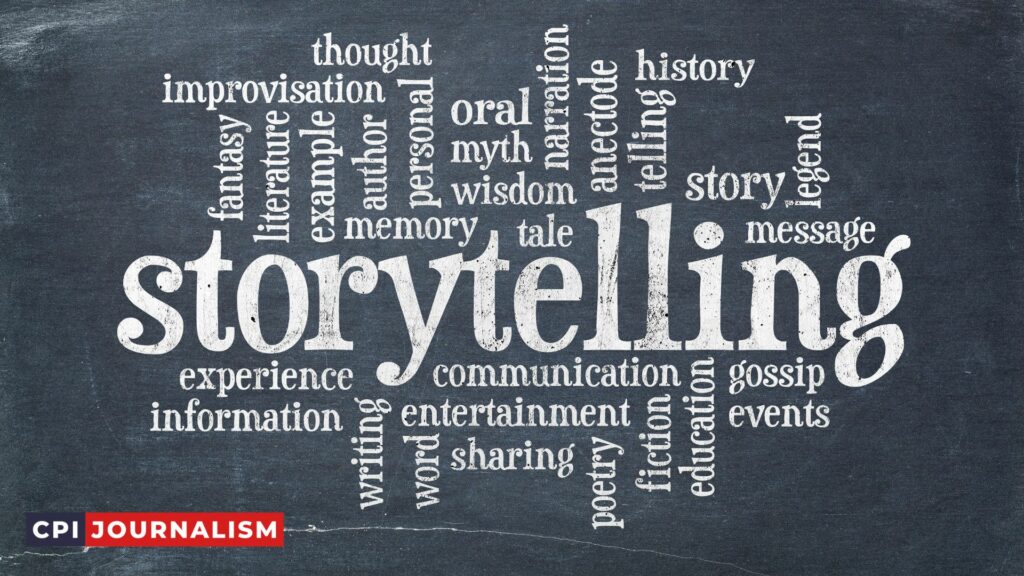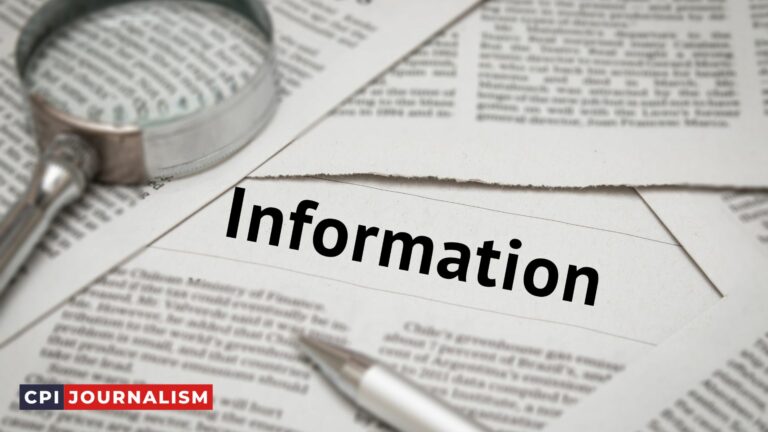What Are the Strategies for Effectively Presenting and Communicating Investigative Findings to the Public?
As an experienced journalist, I understand the importance of presenting and communicating investigative findings to the public in an effective and informative manner.
Effective presentation and communication of investigative findings is essential for journalists to ensure that the public is well-informed about a particular topic or issue.
In this article, I will be sharing my insights and experience to discuss strategies for effectively presenting and communicating investigative findings to the public.
We will explore the various techniques and approaches that can be used to ensure that the public receives the information in a clear and concise way.
Additionally, I will provide some tips and advice on how to ensure that the investigative findings are presented in a credible and accurate manner.
By the end of this article, you will have a comprehensive understanding of the strategies for effectively presenting and communicating investigative findings to the public.
A. Definition Of Investigative Findings
Investigative findings refer to conclusions and facts obtained through a systematic and thorough investigation into a particular issue. Investigative findings can include information, evidence, and other relevant data gathered during the investigation.
Furthermore, investigative findings can also include the analysis and assessment of the gathered information and evidence.
When presenting investigative findings, it is important to provide a clear and concise definition of the findings. This includes providing an overview of the investigation and its purpose, the steps taken to investigate the issue, and the results of the investigation.
Additionally, the definition should provide a context for the findings, including the organizations and individuals involved in the investigation and the timeline of the investigation.
When it comes to communicating investigative findings to the public, it is important to ensure that the findings are accurately reported and presented.
All relevant facts, data, and evidence should be included in the presentation and it should be made clear why the investigation was conducted and what the findings mean.
The presentation should also provide a comprehensive explanation of the investigative process, the sources of information used, and the methods for evaluating the data. Finally, it should be made clear how the findings will be used to address the issue investigated.
B. Overview of Strategies for Effectively Presenting and Communicating Investigative Findings to the Public
In order to effectively present and communicate investigative findings to the public, journalists must employ a variety of strategies. First, they should strive to present their findings in an unbiased and accurate manner.
This means avoiding sensationalism and instead focusing on the facts. Additionally, journalists should employ visual elements, such as graphs, charts, and photos, to effectively communicate the data and its implications.
Second, journalists should provide context for their findings. This includes explaining the significance of the data and how it relates to larger issues.
Furthermore, journalists should also provide context for their sources, such as how the information was collected and who provided it. This will help to ensure that readers understand the reliability and accuracy of the data.
Third, journalists should allow people to weigh in on the findings. This can be done through open forums, surveys, or interviews.
By engaging the public in a dialogue about the data, journalists can ensure that their findings are clearly understood and that their readers have an opportunity to provide their own perspectives.
Finally, journalists should make sure that their findings are accessible to a wide variety of audiences. This includes presenting the data in multiple formats, such as print, digital, and audio/visual media, and publishing in multiple languages.
By making their investigative findings available to a diverse range of readers, journalists can ensure that their work reaches a broad audience.
II. Strategies for Effectively Presenting and Communicating Investigative Findings
In order for investigative findings to be effectively presented and communicated to the public, a number of strategies should be employed in order to ensure the accuracy and clarity of the information being presented.
The following are some of the key strategies that can be used:
1. Be Clear and Concise: It is important to be concise when presenting investigative findings to the public. Clarity is key in communicating complex information, and it is important to avoid jargon or overly technical language which may confuse the audience.
Using simple language and short sentences can help to ensure that the findings are easily understood by the audience.
2. Utilize Visuals: Visuals can be a powerful tool in communicating investigative findings. A well-designed infographic, for example, can help to explain complex information in a more straightforward and visual manner.
Additionally, visuals can help to engage the audience and make the information more accessible.
3. Connect the Conclusions to the Evidence: It is important to present the evidence and facts that lead to the conclusions, as well as the conclusions themselves.
This will help to ensure that the audience understands the evidence that supports the findings and can easily follow the logic and reasoning behind the investigative conclusions.
4. Engage the Audience: Engaging the audience is key in communicating and presenting investigative findings.
Asking questions or providing opportunities for the audience to ask questions can help to ensure that they are actively engaged and understanding the information being presented.
Additionally, it is important to be open and transparent when presenting the findings and to address any questions or concerns the audience may have.
5. Provide Context and Background: Providing context and background information can help to ensure that the findings are relevant and meaningful to the audience.
For example, providing information on the history of the issue or the context in which the investigation took place can help to clarify the issue and provide a clearer understanding of the findings.
By employing these strategies, investigative findings can be effectively presented and communicated to the public.
By being clear and concise, utilizing visuals, connecting conclusions to the evidence, engaging the audience, and providing context and background information, the audience will be better able to understand and appreciate the investigative findings.
A. Establish a Clear And Concise Message
As a journalist, it is important to ensure that the message you are communicating to the public is clear and concise. This means that you should take the time to craft a well-structured message that is easily understood and does not contain any unnecessary information.
First, you should identify the main points you wish to communicate. What are the key takeaways the public should understand from your investigation? Once you have identified these, you can begin to craft a succinct message that clearly outlines the key points.
Additionally, you should consider the target audience for your message. Who are you communicating with and what language are they most likely to understand? This will help you to tailor your message in a way that is most likely to be heard and understood.
Once your message is clear and concise, it’s important to practice delivering it. This will help you to refine it into an effective presentation that is both engaging and informative.
Additionally, rehearsing your message will help to ensure that you are comfortable and confident in communicating it to your audience.
1. Identify The Main Points
When presenting and communicating investigative findings to the public, it is important to identify the main points that need to be communicated.
This should be done in a clear and concise manner so that the audience can easily understand the implications of the investigation. The main points should provide a summary of the investigation, including a brief overview of the issues that were uncovered and the conclusions that were drawn.
In addition, it is important to highlight the implications of the findings for the public and how the findings may affect their lives.
This can be done by providing a comprehensive overview of the investigation and the findings, as well as a discussion of the implications of the findings for the public. By doing this, the audience can better understand the importance of the findings and how they should act in response to them.
It is also important to identify the sources of the findings, so that the audience can see that the investigation was conducted in an ethical and professional manner.
This includes providing an explanation of the methods used in the investigation, the sources of information, the accuracy of the findings, and any other relevant information.
This can help to ensure that the audience understands the reliability of the investigation and the credibility of the results.
Finally, it is important to provide a summary of the implications of the findings and any proposed solutions. This should include an explanation of the potential consequences of the findings and any recommendations that have been made in response to the findings.
This is an important step in helping the audience to understand the importance of the investigation and the implications for their lives.
2. Use Plain Language
As an experienced journalist, one of the most important strategies I recommend when presenting and communicating investigative findings to the public is to use plain language.
It’s important to remember that the goal of communication is to be understood, so using language that is clear and concise is essential.
Avoid using technical terms or jargon that the average person may not understand, and focus instead on using everyday language that is easy to comprehend.
This will ensure that your findings are accessible to a broader audience and that your message is effectively conveyed. Additionally, using plain language can help to reduce misinterpretations and confusion, as well as minimize the risk of misrepresenting your findings.
Another tip is to keep your language as neutral as possible. Refrain from using words and phrases that may have a negative connotation.
Instead, use language that is factual and objective, and try to avoid making any assumptions. This will help to create an open and honest dialogue between you and your audience and will also help to maintain your credibility.
Finally, it’s important to be aware of cultural and regional nuances when communicating. Different audiences may have different interpretations of certain words and phrases, so it’s important to be mindful of this when presenting your findings.
Overall, the use of plain language is an important strategy to keep in mind when presenting and communicating investigative findings to the public.
By using language that is clear and concise, and avoiding technical terms and jargon, you can ensure that your message is understood by a wider audience and that your findings are accurately represented.
3. Avoid Technical Jargon
As journalists, it is essential to ensure that our investigative findings are easily understood by all members of the public. To do this, our language should be kept simple and jargon-free.
Technical terms and phrases can easily confuse an audience, and make it difficult for them to comprehend the information being shared.
When presenting investigative findings, journalists should be aware of their audience’s expertise level and tailor their discussion accordingly. Avoid using technical words and phrases that may not be familiar to those in attendance, and try to explain concepts in layman’s terms.
This will help to ensure that everyone in attendance can follow the discussion and understand the investigative findings.
In addition, when speaking with members of the public, it is important to take the time to answer any questions they may have.
This can be a great way to ensure that everyone understands the investigative findings, and that any technical terms that have been used are clarified.
Finally, journalists can also consider using visuals to present their investigative findings. Visuals, such as charts, graphs, or diagrams, can be an effective way to illustrate complex topics or to explain technical terms.
This can be an invaluable tool for ensuring that everyone in attendance can easily understand the information being presented.
4. Utilize Storytelling Techniques
When communicating investigative findings to the public, it is important to make use of storytelling techniques. This can help to engage the audience and make the findings more memorable.
To do this, it is important to focus on the narrative and create a clear story arc. This will make it easier for the audience to follow and understand the information being presented.
When crafting the story, it is also important to consider the emotions of the audience. This will help to ensure that the story resonates and is memorable.
It is also important to incorporate visual elements, such as images, videos and graphics, to bring the story to life. This can help to make the findings more interesting and engaging.

Finally, it is important to use data and statistics to back up the story. This will help to add credibility and make the findings more authoritative.
It is also important to use language that is accessible and easy to understand, rather than technical and jargon-filled. This will help to ensure that the findings are understandable to the average person.
B. Utilize Visual Aids
When presenting investigative findings to the public, visual aids can be an effective way to communicate the results in an engaging and effective manner. Visual aids can include charts, graphs, and diagrams to illustrate the data and information being presented.
Additionally, videos, infographics, and other digital media can be used to clearly and concisely convey the facts and findings to the public.
Using visual aids to present investigative findings can help to take complex topics and data and break them down into an easily understandable format.
Visuals can be used to demonstrate relationships between data points, clearly illustrate trends and patterns, and allow the audience to more easily digest the data presented.
Additionally, visuals can be used to highlight key points and draw the audience’s attention to the most important information.
When using visuals to present investigative findings, it is important to ensure that they are clear and concise.
It is also important to ensure that they are visually appealing and engaging, as this can help hold the audience’s attention and help them to better understand the data being presented.
Finally, the visuals should be tailored to the audience, as this will help them to better understand the data and the investigative findings.
1. Use Charts and Graphs
It is essential for journalists to effectively communicate investigative findings to the public. One of the best ways to do this is to use charts and graphs. Charts and graphs are an effective way to present complex data in a visual and easy-to-understand format.
For example, if the investigative findings are related to public opinion, a bar graph or line graph can be used to illustrate the results. This will make the data easier to comprehend and make it more likely that the public will understand the findings.
Another benefit of using charts and graphs is that they can be used to show trends over time. For example, if the investigative findings are related to crime rates, it can be helpful to show the changes in crime rates over time with a line graph.
This will give the public a better understanding of the data and make it easier to draw conclusions.
Overall, charts and graphs are an effective way to present complex data in a visual format. They are a great tool for journalists to use to effectively communicate investigative findings to the public.
2. Incorporate Video and Audio
Video and audio recordings can be very effective in communicating investigative findings to the public. These recordings can provide an extra layer of credibility and help to engage readers and viewers in the investigative process.
Videos and audio recordings should be professionally produced and edited to ensure that the findings are presented in an accessible and engaging manner.
When using video or audio recordings to present investigative findings, it is important to include a variety of visual elements, such as interviews with key figures, images, graphs, and animations, to help make the findings more understandable and engaging.
Additionally, it is important to make sure that the audio and video are of high quality and that the visuals are clear and easy to understand.
When presenting audio or video recordings of investigative findings, it is also important to provide context for the viewer or listener. This could include providing a brief overview of the investigative process, and providing a timeline of key events.
Additionally, the recordings should include information about the sources used in the investigative process, and any potential biases or limitations of the findings should also be discussed.
Finally, it is important to ensure that the audio and video recordings are accessible to everyone, regardless of their level of technical proficiency. This means providing captions and transcripts for audio recordings, and making sure that videos are compatible with all platforms.
By utilizing video and audio recordings to present investigative findings, journalists can ensure that their message is accessible and engaging to the public.
Through careful planning and preparation, these recordings can help to effectively communicate the investigative process and findings to the public.
3. Utilize Infographics
Infographics are an effective way to communicate investigative findings to the public. Infographics can be used to present complex data in an easily understandable and visually appealing way.
They are a powerful tool to help the public visualize and understand the findings of the investigation. Infographics can be used to summarize the main findings of the investigation and provide the necessary context to make the findings accessible to the public.
When creating infographics, it is important to keep the design simple and straightforward. Information should be presented in a logical order, with the most important points highlighted.
Including relevant visuals, such as charts and diagrams, can help to explain the findings in a more engaging way. Additionally, using color-coded items or using different shapes can help to draw attention to the most important points.
Using infographics can also help to make the findings more engaging and easier to understand. By using creative visuals, infographics can help to make the findings more memorable and easier to comprehend.
Additionally, infographics can be used to provide a comprehensive overview of the investigation and its findings. This can help to give the public a more comprehensive understanding of the subject matter.
Finally, infographics can help to simplify complex information and make it easier to share with the public. By making the information more accessible, it can help to ensure that the public understands the findings and can take action based on the information provided.
4. Incorporate Interactive Elements
When presenting investigative findings to the public, it is important to consider ways to incorporate interactive elements. This can be done through the use of videos, polls, quizzes, surveys, and other interactive tools that allow the public to engage with the material presented.
Videos are a great way to engage the public and to help them better understand the investigative findings. They can be used to present a summary of the findings and to help explain the details in a more effective way.
Polls and quizzes can be used to help the public assess their understanding of the material and to identify areas where they may need further clarification. Surveys are also an effective way to gain insight into the public’s opinion on the matter.
Finally, it is important to ensure that these interactive elements are accessible to the public. This means providing them with a variety of ways to access the material, such as through a website, email, social media, or other platforms.
By making the material accessible, it will make it easier for the public to engage with the investigative findings.
C. Utilize Social Media
Social media is an essential tool for effectively communicating investigative findings to the public. Utilizing a mix of platforms, such as Twitter, YouTube, Instagram, and Facebook, can help reach a wide range of audiences.
When using social media, it is important to ensure that all information provided is factual and accurate. This will help build trust with the public, and ensure that your message is clear and credible.
To maximize reach, consider using visuals, such as infographics or videos, to explain complex topics. This makes the content easier to understand and more engaging. Additionally, using hashtags to categorize content can be an effective way to reach more people.
When engaging with the public, be sure to respond to questions and comments in a timely manner, and demonstrate that their feedback is valued. Strategic use of social media can help build relationships with the public, and earn their trust.
When sharing investigative findings, it is important to remember that social media is a public domain. Be mindful of the information shared, and consider the legal implications of each post.
1. Leverage Existing Platforms
As an investigative journalist, the most effective way to communicate your findings to the public is to leverage existing platforms in order to quickly and efficiently reach your target audience.
Social media channels and online news outlets are great resources to share your story, as they are widely used and accessible to the public.
When crafting your message, be sure to include clear and concise language that will be easily understood by a broad audience. Try to focus on the main points of your investigation, as well as the implications of your findings.
Keep your message concise and to the point, as this will help to ensure that your message is not lost among the noise.
In addition to social media and news outlets, consider using broadcast media such as radio and television to reach a wider audience. By using these platforms, you can engage in a dialogue with your audience and discuss your findings in greater detail.
This can also help to foster a sense of trust with your audience, as it will demonstrate that you are committed to providing them with accurate, up-to-date information.
Finally, don’t forget to promote your story on other media platforms such as blogs, podcasts, and print publications. This will help to ensure that your message reaches as many people as possible, and that it has a lasting impact.
By leveraging existing platforms, you will be able to effectively present and communicate your investigative findings to the public.
2. Create a Dedicated Hashtag
Hashtags are an essential tool for connecting with a wider public audience on social media. Using a dedicated hashtag to communicate investigative findings can help to create a sense of cohesion and ensure that the information is widely shared and easily accessible.
When creating a hashtag, it is important to consider the length and the message that it conveys. It is best to use a hashtag that is both memorable and easy to type.
Additionally, the hashtag should be relevant to the topic of your story, as this will make it easier for people to find and share information.
To maximize the reach of your hashtag, you should also consider using popular, trending hashtags that relate to your topic. This will further boost the visibility of your story and help to engage a wider audience.
It is also important to promote the use of the hashtag. You should include it in all of your social media posts, as well as in any relevant emails, press releases, and other communications.
Additionally, you should encourage people to share the hashtag and the associated story with their friends and followers.
Finally, tracking the usage of your hashtag is essential. You can use various analytical tools to monitor the reach of your hashtag, as well as any associated conversations.
This will help you to gain valuable insights into the public’s response to your story and identify areas to improve your investigative reporting in the future.
3. Engage with Followers
As a journalist, one of the most effective ways to ensure your investigative findings reach the public is to engage with your followers. This includes developing relationships with your readers and engaging in conversations with them.
By doing so, you will not only be able to share your findings with your followers but also get feedback from them.
Here are some effective strategies to engage with your followers:
1. Post regular updates on social media. Posting regular updates on your investigative findings will keep your followers informed of your progress.
You can also post updates to announce new developments or changes in the story. This will ensure that your followers are kept up to date with the latest developments.
2. Respond to comments and questions. Make sure to respond to comments and questions that your followers may have. This will show them that you are interested in engaging with them and value their input.
3. Share your findings with other media outlets. Another great way to ensure your investigative findings reach the public is to share them with other media outlets. This can help to amplify the reach of your findings and allow you to reach a wider audience.
By engaging with your followers and sharing your findings with other media outlets, you can ensure that your investigative findings reach the public. This will help to ensure that your findings have a greater impact and can help inform public opinion.
4. Utilize Paid Advertising
Paid advertising can be an effective way to communicate investigative findings to the public. While organic and unpaid marketing efforts are important, paid advertising can help to amplify the reach of your message.
When it comes to paid advertising, there are a few different options to consider. First, you can use search engine marketing (SEM) to target specific keywords and reach your desired audience.
This type of advertising allows you to place ads on search engine results pages (SERPs) when users search for related keywords.
You can also use social media advertising to reach potential readers. This type of advertising allows you to target users based on their interests and demographics. Finally, you can use display ads, which are typically placed on other websites or apps.

When it comes to paid advertising, it’s important to create ad copy that is clear and concise. Make sure the message is compelling and relevant to the investigative findings.
Additionally, make sure to include a clear call-to-action that encourages the reader to take action.
For best results, it’s important to track the performance of your ads and adjust your strategy accordingly. This will help you to optimize your advertising to ensure it’s as effective as possible.
Overall, utilizing paid advertising can be an effective way to reach your desired audience and communicate investigative findings to the public. With the right strategy in place, you can ensure your message is heard loud and clear.
D. Utilize Traditional Media
In addition to utilizing digital and social media to communicate investigative findings to the public, traditional media, such as television, radio, and print, are invaluable resources for disseminating important information.
Television and radio broadcasts can reach a wide audience, while print can provide detailed, in-depth analysis.
When looking to utilize traditional media, it is important to consider the target audience. Television and radio broadcasts are great for reaching a wide audience quickly, but they may not be the best choice when trying to reach a specific demographic.
Print can be more effective for reaching a niche audience, as it can provide more in-depth analysis and detailed information.
In order to effectively present and communicate investigative findings through traditional media, it is important to have a plan in place.
Identify the target audience, develop a compelling narrative, and determine the best medium to reach that audience. Television and radio broadcasts should be concise, informative, and engaging, while print should provide detailed, in-depth analysis of the findings.
It is also important to consider the timing of the presentation. Timing is key when utilizing traditional media, as there is often a limited window of opportunity to reach the target audience.
Finally, it is important to remember that traditional media is often more expensive than digital and social media, so it is important to stay within budget when utilizing these platforms.
By utilizing traditional media, journalists can reach a wide audience quickly, providing the public with the information they need to make informed decisions.
However, it is important to consider the target audience, develop a compelling narrative, and determine the best medium to reach that audience when utilizing traditional media.
1. Leverage Existing Relationships
One of the most effective strategies for effectively presenting and communicating investigative findings to the public is to leverage existing relationships. This could mean working with media outlets such as TV and radio stations, newspapers, and magazines to help spread the message.
It could also involve reaching out to individuals or organizations who have an interest in the topic, such as advocacy groups, local businesses, and politicians.
By building relationships and working together, you can ensure that your message reaches the widest possible audience and has the most impact.
In addition, you should also look for creative ways to engage the public. This could include using social media, hosting public events, or creating interactive tools such as infographics to explain your findings.
By engaging the public and making your message accessible and interesting, you can ensure that your findings are properly understood and appreciated.
Finally, you should also consider ways to use technology to your advantage. For example, you could create a webinar or podcast to present your findings and allow people to engage with you in real-time.
You could also use virtual reality or augmented reality to create a more immersive experience. By embracing technology, you can make your findings more accessible and engaging to the public.
2. Utilize Press Releases
Press releases are an essential tool for effectively presenting and communicating investigative findings to the public. They serve as a means of providing a succinct, informative summary of the investigation’s results and conclusions and can be used to reach a wide audience.
A well-crafted press release should include a headline, timing information, a summary of the investigation’s results, a description of the investigation’s methods and findings, and contact information for additional inquiries.
When crafting a press release, it is important to make the headline as attention-grabbing as possible to ensure the release is noticed.
Additionally, including a timeline of the investigation, such as when the investigation began and when it ended, can help to provide context for the story.
A well-written summary of the investigation’s results should also be included, highlighting the most important findings and conclusions.
It is also important to provide a brief description of the investigative methods used, such as interviews conducted, documents obtained, and research conducted, in order to demonstrate the thoroughness of the investigation.
Finally, contact information should be included for those who may have additional questions or inquiries.
Press releases are an effective way to get the word out about an investigation’s results and make sure that they are widely disseminated to the public.
With a well-crafted press release, investigative reporters can ensure that the public is informed of their findings and that the story is heard.
3. Host a Press Conference
Hosting a press conference is one of the most effective ways to present and communicate investigative findings to the public. It is a direct and visual way for journalists to ask questions about the findings and for the public to receive an immediate response from the investigative team.
When hosting a press conference, it is important to ensure that the key messages are clear and concise. The investigative team should be prepared to answer any questions that may arise from the audience. It is also important to ensure the press conference is timely and relevant.
When organizing a press conference, it is essential to identify the target audiences and media outlets that will best reach them. This way, the investigative team can ensure that the right people are receiving the right message.
In order to ensure a successful press conference, the investigative team should plan and prepare appropriately.
This includes selecting and inviting the right media outlets, selecting the right venue, preparing the presentation, and ensuring that all members of the investigative team are well prepared to answer questions.
Finally, it is important to follow up with the media outlets after the press conference. This is an effective way of ensuring that the key messages from the press conference are spread throughout the news cycle.
4. Utilize Targeted Outreach
It’s not enough to simply present investigative findings to the public – it’s essential to ensure the information reaches its intended audience. To do this, it’s important to employ targeted outreach strategies.
First and foremost, journalists should develop a clear plan for how they will disseminate their findings. This plan should include a list of potential target audiences, and specific tactics for reaching them.
For example, a journalist might decide to target industry experts, policy makers, and members of the public, and use a combination of email campaigns, press releases, and social media postings to reach these audiences.
When creating their outreach plan, journalists should tailor their strategy to the specific preferences and behaviors of each target audience.
For example, industry experts might respond best to emails with detailed information and references, while members of the public might be more responsive to social media posts with eye-catching visuals.
Additionally, journalists should consider the timing of their communications. Generally, it’s best to distribute information as soon as possible, while the issue is relevant and top-of-mind. This will help ensure the findings have the greatest impact.
Finally, journalists should track their outreach efforts to measure their effectiveness. This will enable them to adjust their strategy as needed and ensure their findings are reaching the intended audiences.
Conclusion
As an experienced journalist, I can confidently state that effectively presenting and communicating investigative findings to the public is a critical skill.
In order to do this effectively, it is important to take into account the target audience, the format of the presentation, the purpose of the investigation, and the available resources.
In terms of target audience, the presentation should be tailored to the particular needs of the audience, taking into account their level of understanding, interests, and desired outcomes.
When it comes to presentation format, the presentation should be organized in a logical manner and be clear and concise in order to communicate the investigative findings effectively.
Additionally, the use of multimedia can help to engage the audience and make the presentation more interesting.
The purpose of the investigation should also be taken into account, as this will help to determine the most appropriate way to present the findings.
Finally, it is important to consider the resources available and to use them to the best advantage in order to ensure the effectiveness of the presentation.
In conclusion, effective communication and presentation of investigative findings requires careful consideration of the target audience, the format of the presentation, the purpose of the investigation, and the available resources.
With these factors in mind, I believe that journalists can create engaging and informative presentations that will effectively communicate their investigative findings.
A. Summary of Strategies for Effectively Presenting and Communicating Investigative Findings to the Public
As an experienced journalist, I have learned a few key strategies for effectively presenting and communicating investigative findings to the public. First, it is critical to have a comprehensive understanding of the subject matter.
This means doing the research to understand the facts and the context of the situation. This will help you more effectively communicate the investigative findings to the public.
Second, create a plan for how to present the findings. Think about the most effective way to communicate the information that you have gathered to the public. This might include creating a visual presentation, writing an article, or hosting a press conference.
Third, establish credibility. When presenting investigative findings, it is important to establish credibility by citing sources and providing evidence to back up the claims that you are making. This will help the public trust the information that you are presenting.
Fourth, create a clear message. Make sure that the message that you are conveying is clear and understandable to the public. This will help ensure that the public understands the investigative findings that you are presenting.
Finally, use visuals to communicate the findings. Visuals can be a powerful tool to communicate the findings in an engaging and effective way.
Utilizing visuals such as graphs, charts, maps, and infographics can help to make the information easier to understand and more memorable for the public.
Overall, it is important to remember that effectively presenting and communicating investigative findings to the public is a critical skill for journalists. Utilizing the strategies outlined above can help ensure that you are effectively communicating the investigative findings to the public.
B. Final Thoughts on the Importance of Effectively Communicating Investigative Findings
As an experienced journalist, I cannot stress enough the importance of effectively communicating investigative findings to the public. Good communication of investigative findings is essential for keeping the public informed and maintaining trust in the media.
It is also important for journalists to convey their findings in a clear and concise way, so that the public can understand the implications of the information.
In addition, effective communication of investigative findings helps to foster dialogue between the media and the public.
This dialogue can be invaluable in helping to create an engaged and informed public that is better equipped to make decisions and take action on the issues that are important to them.
Finally, it is also important to remember that investigative findings should not be used to push a political agenda or to manipulate the public.
Journalists should use their findings to help inform the public and to empower citizens to make informed decisions. Investigative journalism should not be used as a tool to push a certain agenda or to sway public opinion.







